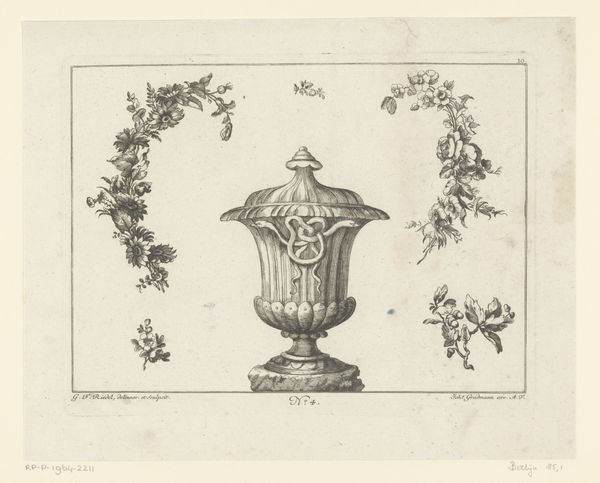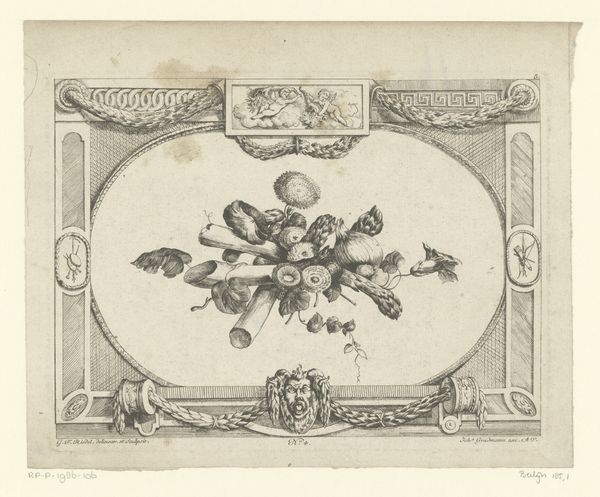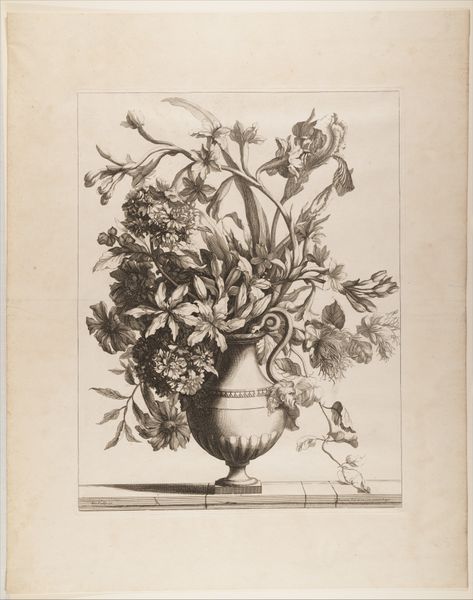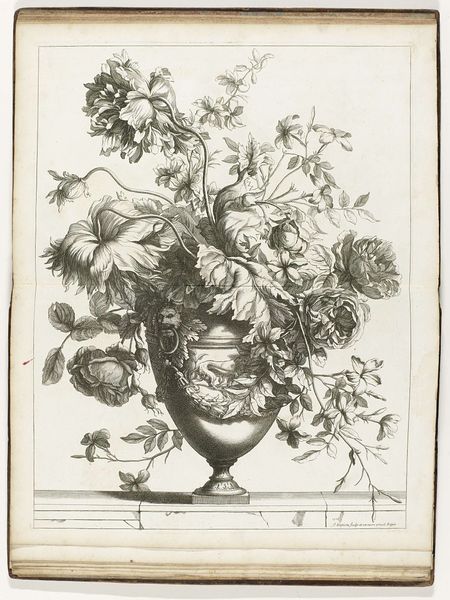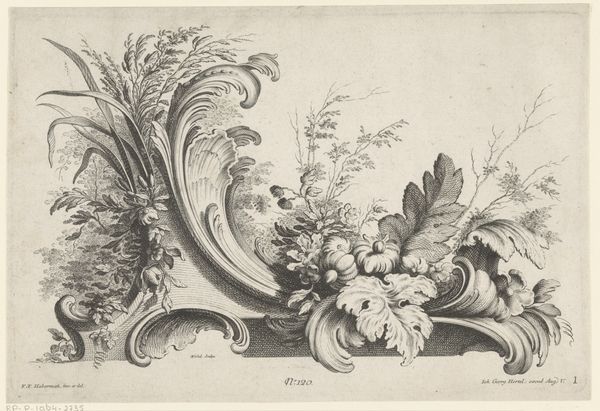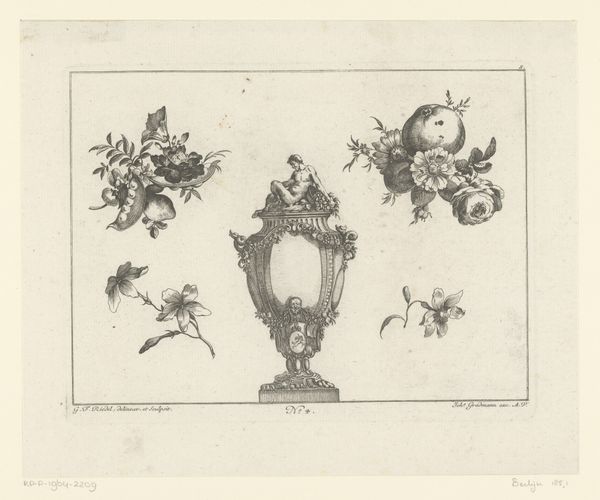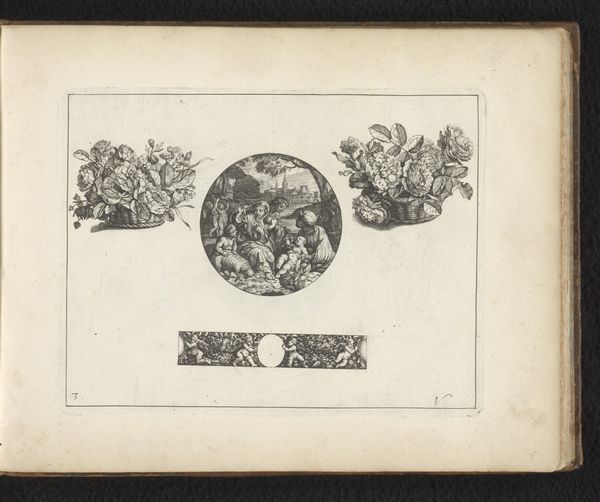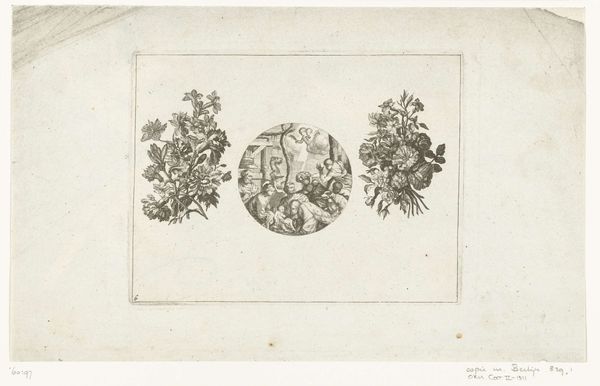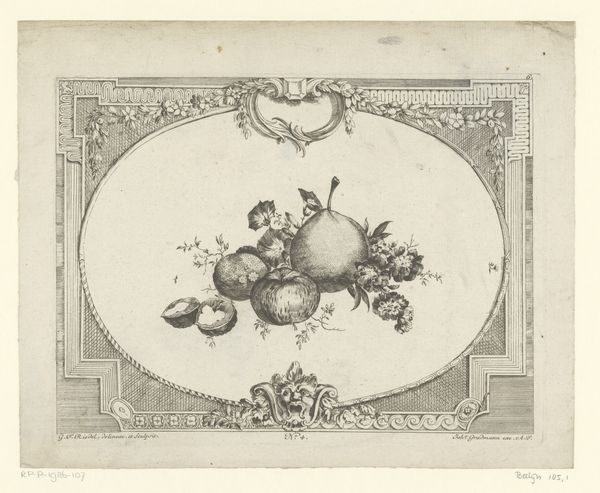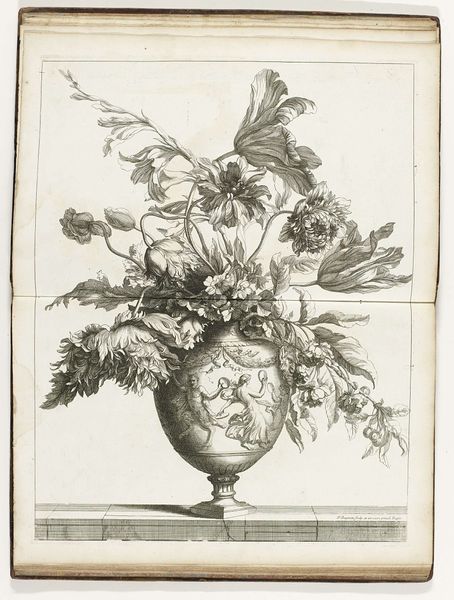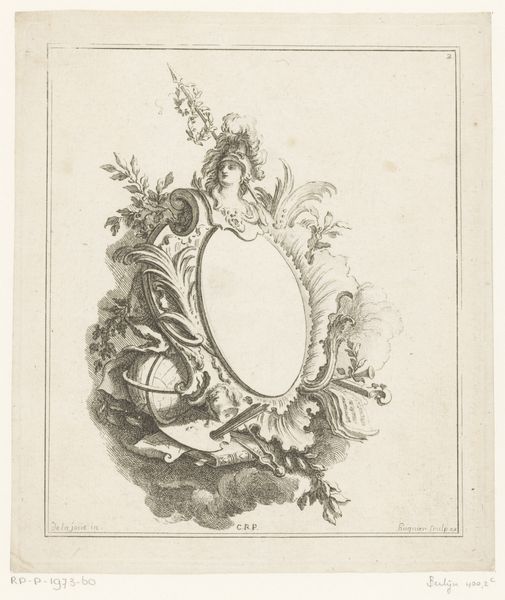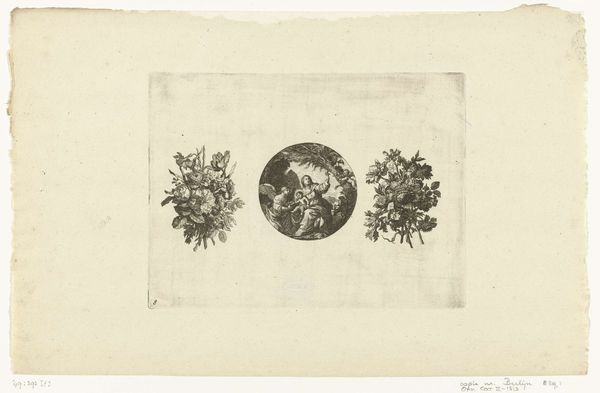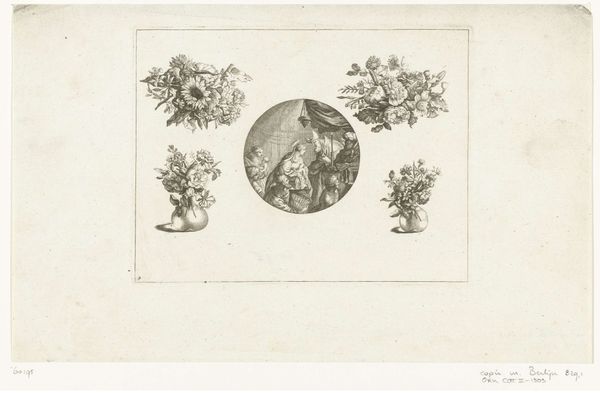
Dimensions: height 175 mm, width 231 mm
Copyright: Rijks Museum: Open Domain
Curator: Today we’re looking at “Vaas en vruchten,” or "Vase and Fruit", an etching and engraving by Gottlieb Friedrich Riedel dating from 1778-1779. It’s currently housed here at the Rijksmuseum. Editor: It strikes me as quite charming, but also deliberately arranged. The composition feels almost decorative, with a central vase flanked by arrangements of fruit and foliage. A sense of controlled abundance comes to mind. Curator: That's an insightful observation. In the 18th century, prints like this circulated widely, serving as models for artisans and influencing decorative arts. We see this neoclassical vase laden with ornamentation, echoing a desire for luxury and a return to classical forms that was fashionable amongst elites. The fruits themselves held symbolic weight; abundance, prosperity, divine favor... all ideas tied to wealth and social standing. Editor: And that cupid perched atop, gazing serenely outward—quite on trend for the period, linking ideas of love, luxury and idealized beauty! Thinking about that cupids, what do you see as the role for depictions such as this in popular society at that moment? Was the display just of beautiful images? Curator: Certainly not merely for aesthetic pleasure. These images helped to solidify social structures. By promoting certain ideals of beauty and lifestyle, prints like these helped to create cultural homogeneity, instructing, especially women, on standards of good taste and manners as an essential commodity and performance of social capital. In doing so it upheld a society often riddled with disparity. Editor: Absolutely. So the artist, even working on a relatively small, ostensibly "decorative" print, would inevitably be reinforcing—or perhaps subtly questioning—the social values of the time. One begins to ponder the audiences looking upon these pieces...What messages and ideas might viewers gather when encountering it outside these established social norms and systems? Curator: These seemingly innocuous images carried powerful messages that actively shaped and continue to impact societal norms. Art then, as it still remains, has a profound responsibility to examine the historical power of image production and reception. Editor: Indeed, contemplating the artwork's power as it ripples outward into our shared present and potentially towards futures unknown. What a fantastic place to wrap our time together contemplating art history. Thank you.
Comments
No comments
Be the first to comment and join the conversation on the ultimate creative platform.
